How often do you find places more interesting than you expect? This was the case when Dale of the Maritime Explorer travelled with us to Managua in Nicaragua. Read on to the highlights he discovered.
This is my fifth post on Nicaragua from Adventures Abroad’s just completed Central American odyssey designed and led by the company’s veteran tour guide Victor Romagnoli. In this post we’ll make our way from the city of Granada which I was frankly disappointed in, but not the surrounding area, through the capital city of Managua and then to the ruins of Leon Viejo. It promises to be a fascinating day and I hope you’ll come along to enjoy it.
By Central American standards Nicaragua is a fairly large country, just a little larger than the state of New York. However, its principal cities are almost all located along a short stretch of highway just inland from the Pacific Coast starting with Granada then Masaya where we visited the volcano of the same name then a short distance away Managua, and finally Leon. Originally the tour was slated just to drive through Managua as a necessary evil of getting to Leon on the other side, but our local guide Aura Munguia has convinced us that there are a few things worth seeing in the capital city.
Managua – More Interesting than Expected
Managua is a city of just over a million people with another 400,000 or so in the metropolitan area. It was chosen as the capital city in 1852 as a compromise between the much older cities of Granada and Leon that were constantly at each other’s throats. It has a convenient location on Lake Managua almost equidistant between the two rivals, although that also put it smack in the middle of one of the most earthquake prone areas in the Western Hemisphere. Earthquakes, floods and fires have left virtually no traces of much that is older than a few generations with a couple of notable exceptions. After a devastating earthquake in 1931 the city was almost rebuilt from scratch by the Somoza family dictatorship that ruled the country from the 1930’s to the late 1970’s. It actually had a reputation as the leading city in Central America until 1972 when one of the worst earthquakes of the 20th century destroyed almost the entire city and killed nearly 20,000 inhabitants.
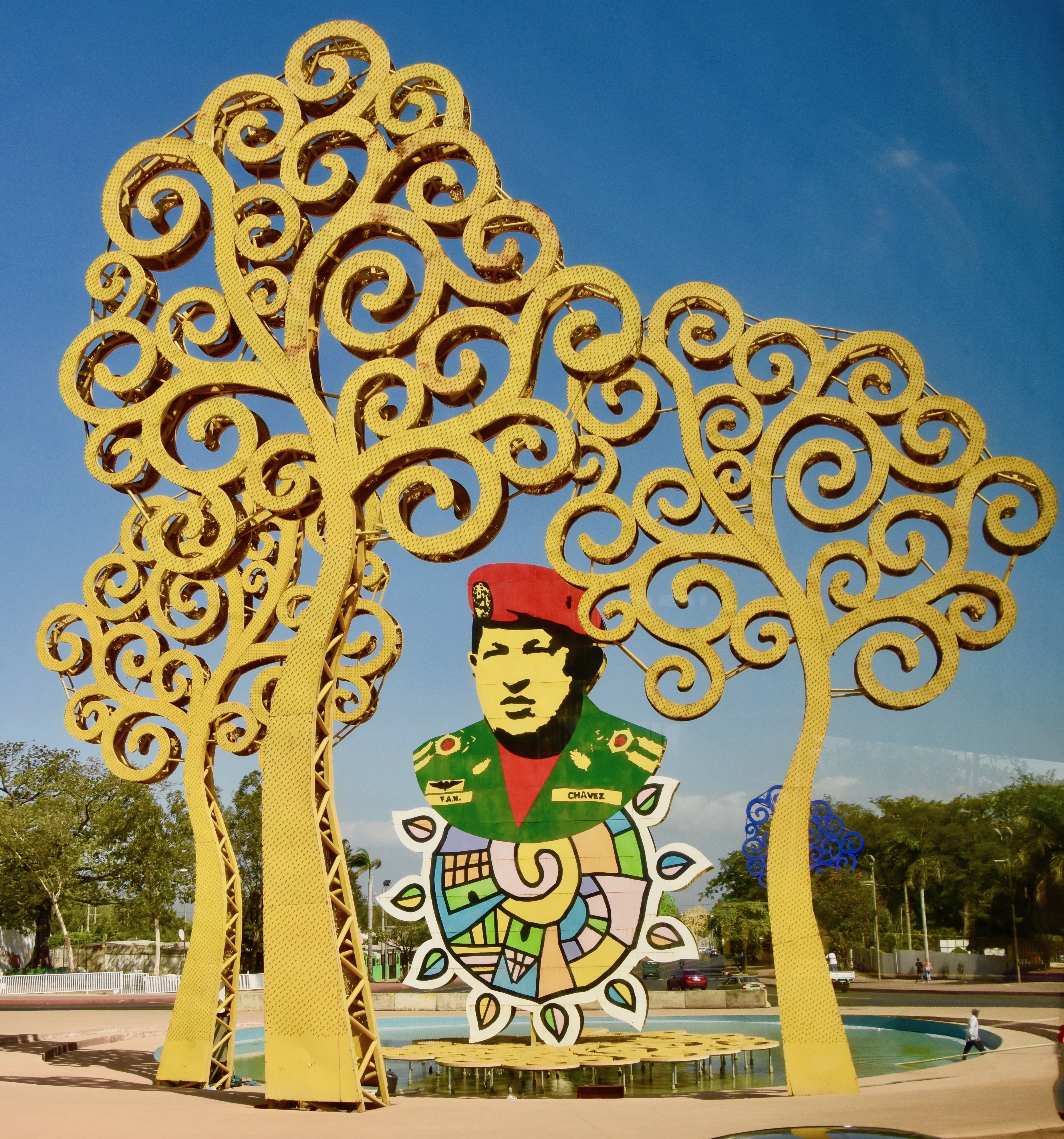
It has never recovered its fleeting moment of international recognition and today is securely in the grip of the Sandanista elites who prefer form over substance as demonstrated by the hundred or so Trees of Life that adorn or blight (depending on your point of view) the main thoroughfares of the city. These were designed by the first lady of Nicaragua Rosario Murillo, a very controversial and divisive figure in the country’s politics. The 2.5 million bulbs needed to light up all the trees cost a fortune every year in a country where electrical blackouts are common. But hey, everyone needs to be reminded of what a great guy Hugo Chavez was and all he did for his fellow Venezuelans as well as propping up the Sandinistas with cheap oil for decades. During the uprisings of 2018 many of the Trees of Life were toppled by cheering mobs, which may account for the brutal response by Daniel Ortega or as many believe, the power behind the throne, Rosario.
I did not have any real preconceptions about Managua which led me to look at the city with unjaundiced eyes and frankly, despite the ridiculous Trees of Life, it seemed quite liveable compared to negative reputation of Nicaragua in the western press. Probably because it is such a poor country and most people can’t afford cars, the streets were not overcrowded or smoggy. In fact getting into and out of the city was really a breeze. I saw no real barrios lining the hillsides, but that doesn’t mean they aren’t there. In general, the people, while perhaps subdued, were not unfriendly and life seemed to be going on pretty decently in Managua – at least at the superficial level that a passing tourist such as myself would observe. Maybe it was all a facade, I honestly don’t know.
We had two stops in Managua, sort of an after and before in that order. The first was to see the absolutely ghastly Immaculate Conception Cathedral which was built to replace the old cathedral that was permanently closed after the 1972 earthquake.
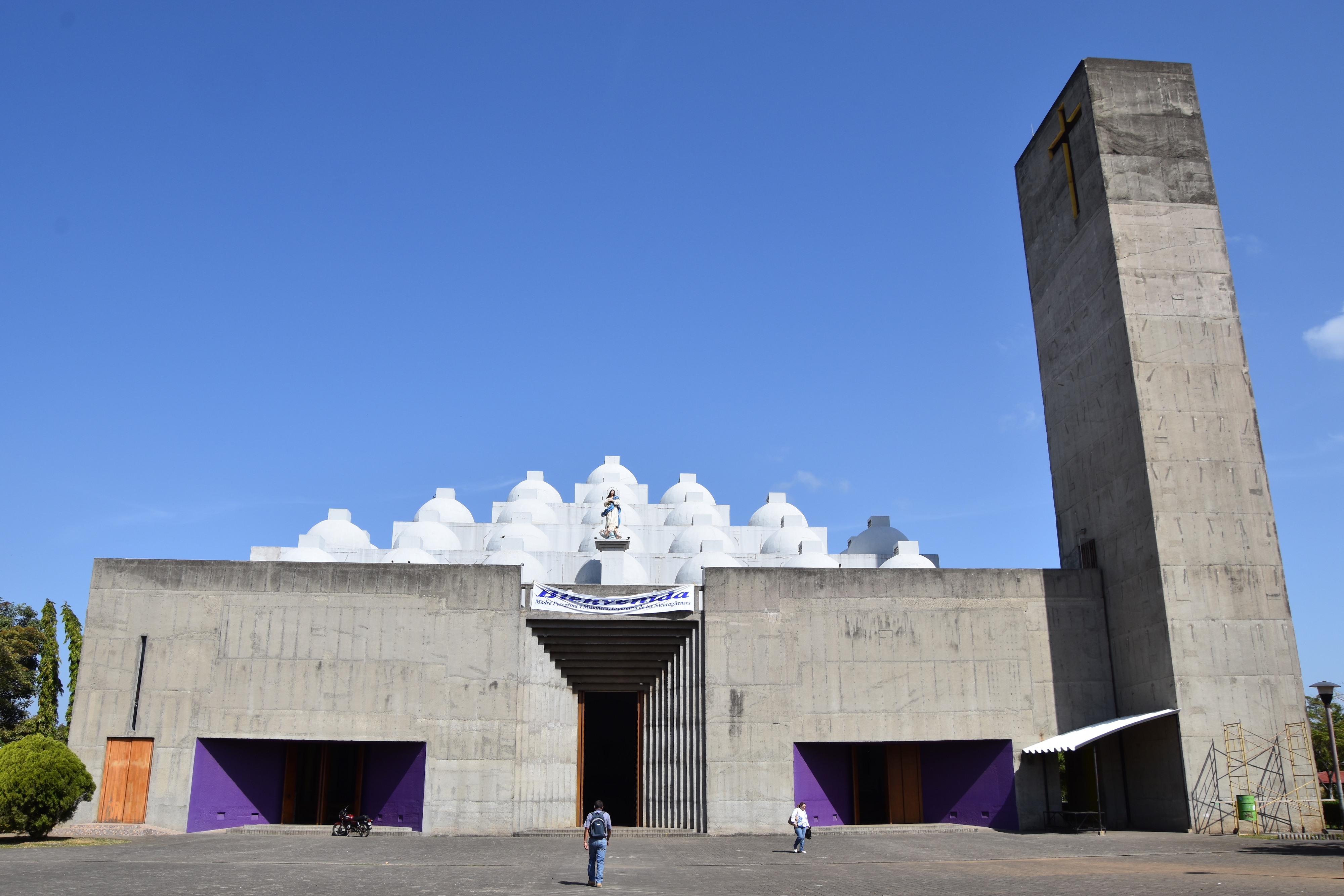
Now don’t get me wrong, I loved this stop because it has such a great story behind it. Somebody forgot to tell the Mexican architect Ricardo Legoretta that he was designing a church and not a mosque. Somebody should also have reminded him that Buitalism as an architectural style has failed, brutally. While many mosques feature a collection of small rounded domes or cupolas I’m not aware of any churches that do – usually one or two cupolas are sufficient, not more than twenty. In this case the addition of the small projections at the top inevitably led the locals to compare them to chichas and thus the nickname for the church La Chichona or to put it somewhat crassly, The Tits. I’m sure that’s not what Tom Monaghan the founder of Domino’s Pizza and the guy who footed the bill for this monstrosity had in mind when he hired Regoretta. Well let’s go inside and see if things get any better.
They do. The sparsity of decoration on the outside continues on the inside, but here it works. There is a sense of awe and reverence created by the huge open space.
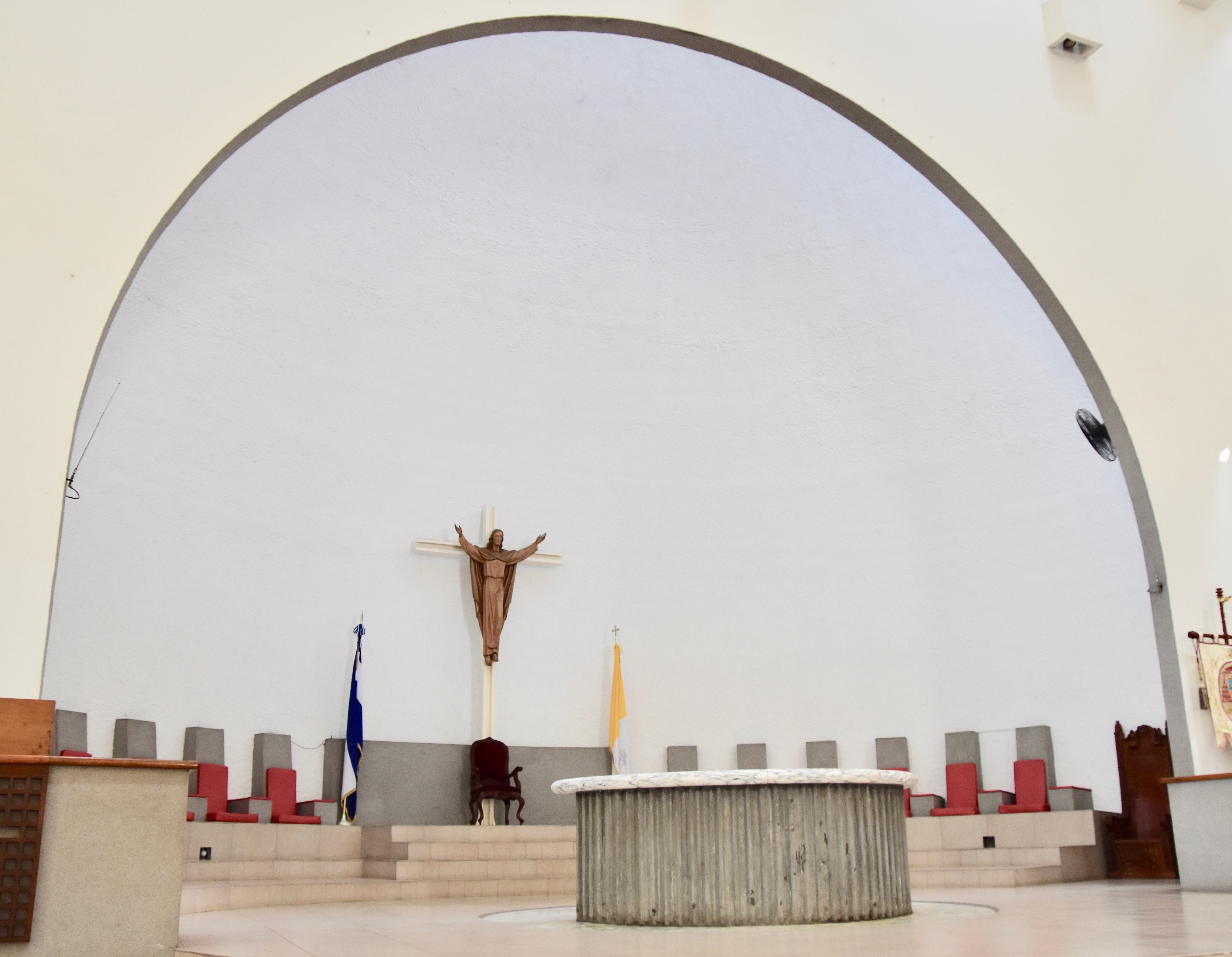
Although I am not a religious scholar, I do fancy that I know a thing or two about the Catholic religion, if only from osmosis in visiting so many of these churches around the world. The one set of items I always look for are the Stations of the Cross which often contain some of the finest and most expressive art work in the church. Traditionally there are fourteen stations ending with the entombment which I always found puzzling because isn’t the real message not the death of Christ, but his resurrection?
So I was pleasantly surprised to actually see a 15th station in this cathedral depicting the Resurrection and learned that this is an increasing trend around the Catholic world. I could make a reference to a certain infamous 20th century cult leader whom this portrait resembles, but I won’t.
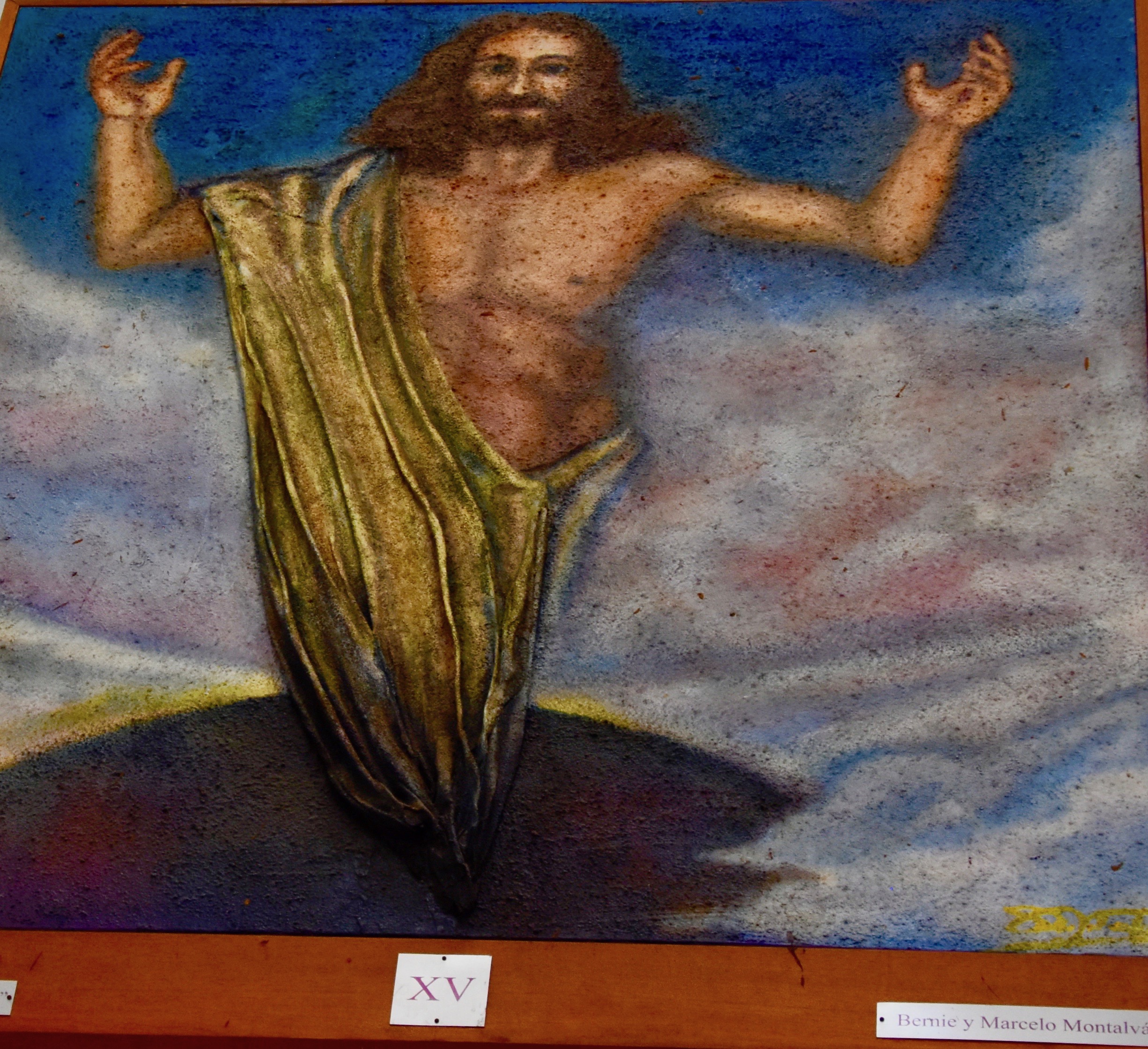
One final comment on the new cathedral. Less than three months before our visit, seven mothers went on a hunger strike here protesting the imprisonment of their children for political reasons i.e. they dared oppose Daniel Ortega and the Sandanistas. It didn’t last 24 hours as a ‘pro-government’ mob went on a rampage in the church and the mothers, for their own safety and probably more-so of their children, left the building. So much for peaceful protest.
From the new cathedral we made our way to the centre of Managua and a spacious open area where the old cathedral and the Palacio Nacional are both located.
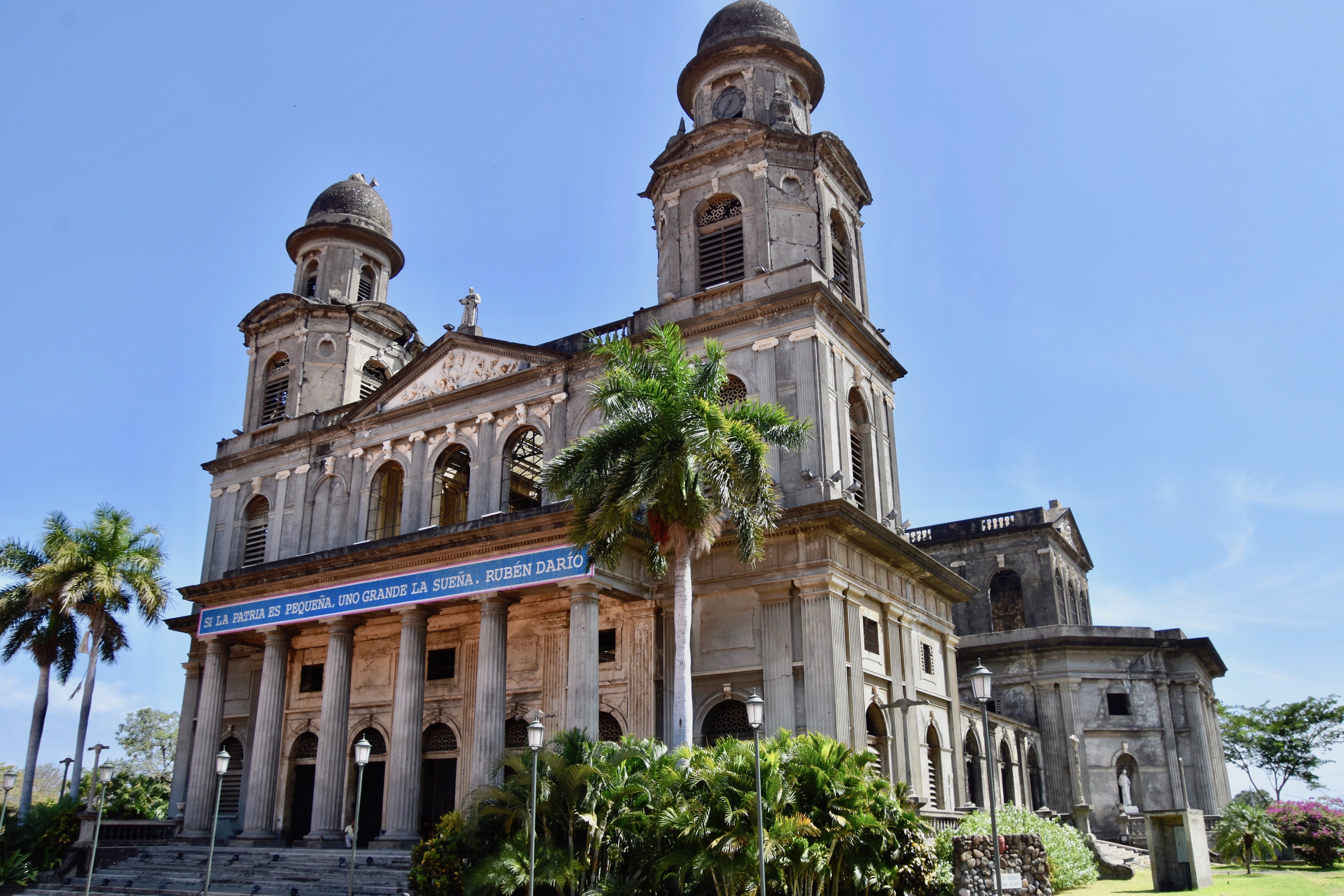
Although it could pass for a much older Spanish colonial church the old cathedral or more properly the Catedral de Santiago, is not really that old. It was built by Belgians and only completed in 1938. It was so heavily damaged in the 1972 earthquake that it was condemned, but not demolished and makes for a suitably grand relic. We will be seeing a lot more of these and a lot older ones at that when we get to the Guatemalan city of Antigua.
At right angles to the old cathedral is the Palacio Nacional which is grand neo-classical structure from which the Somoza regime ran its dictatorship until in 1978 when the Sandanistas stormed it and arrested the puppet deputies, putting an end to forty years of oppression or so it was hoped. The Colombian novelist Gabriel Garcia Márquez dubbed it the ‘banana Parthenon’. He had a way with words.

Not wishing to continue the building’s reputation as a seat of the abuse of power, the Sandanistas turned it into the Cultural Palace that every communist government seems to think is de rigeur in legitimizing their iron grip on the people. Despite this obviously tremendous draw there was only one woman pushing a baby carriage in the entire plaza. Three ice cream salesmen were so desperate for business that they kept circling us on their little pedal driven carts with each ringing their bells louder and louder in the apparent belief that if they made enough racket we would buy them off with a purchase. It didn’t work.
We headed back to the bus leaving only the woman and her baby and the ice cream peddlers to bring life to what was otherwise a pretty bereft scene.
Leon Viejo
Next we headed north from Managua along the shores of Lake Managua where another of Nicaragua’s famed volcanoes, Momotombo soon comes into view looming ominously on the north shore of the lake. I say ominously because this is an active volcano and like Vesuvius, has a reputation for burying entire cities under a mountain of ash. In fact, our next stop is at the site of one of its victims, León Viejo, the original location of the city of León, abandoned in 1610 and buried into oblivion by subsequent eruptions, not be be rediscovered for three and a half centuries and now a UNESCO World Heritage Site.

One of the highlights of my travels is to visit UNESCO World Heritage Sites as they usually are not only amazing, but greatly informative as well. Go to enough of them and you truly do get a much better world view than you would if you confine your travels to resorts, theme parks and element of self-criticism here, golf courses. Or even if you eat up cultural and historical sites, but ignore natural wonders or vice versa. One of the reasons Alison and I signed up for this trip was that it does visit so many World Heritage Sites and León Viejo is the first for us on this trip. For those who started in Panama they have already visited the two sites in Panama City that have received the UNESCO designation, Panama Viejo and the Historic District which I wrote about in this post from 2018.
After that build up I’m sorry to say that León Viejo will almost certainly be underwhelming for all but the most ardent of archaeological fans. In fact, it’s fair to say that our group spent more time birding on the site than in actually touring the ruins, but in fairness, the birding here is really good. The reason for this is that León Viejo is a truly almost unscratched archaeological wonder that perfectly preserves, without subsequent development, a very early Spanish Colonial city. The burying of the city and its subsequent abandonment have made it unique among New World colonial settlements, only Jamestown in Virginia comes close.
It is the integrity of León Viejo that makes it so remarkable as this quote from the UNESCO website makes clear.
Integrity
The space on which the Ruins of León Viejo lie contains the main material, architectural and urban elements of the old town of León founded in 1524 and which disappeared in 1610. The main urban roads (Calle Real – the Royal Road – and Plaza Mayor – the Grand-Place), and the most important buildings (religious, civil, and those for housing and military installations), which are fundamental and characteristic elements of the Spanish-American cities founded in the 16th century are clearly defined.
The abandon of the city in 1610 and its gradual burial helped preserve the ruins unaltered for over 350 years, until their discovery in 1967. Since then, excavations, building surveys, scientific studies and conservation works were carried out, which would ensure the preservation of the existing ruins and their exploitation in a sustainable manner with the participation- and for the benefit — of the community.
Anthropogenic risks remain minor, because the ruins are in a sparsely populated area not developed an urban scale. The main threats to the integrity of the site are natural phenomena.
So if I haven’t put too much of a damper on things, let’s explore León Viejo.
Getting here involves turning off the main Managua/León highway and heading to the tiny, dusty village of Puerto Momotombo where despite what happened in 1610 and many times since, people still live under the shadow of an active volcano.
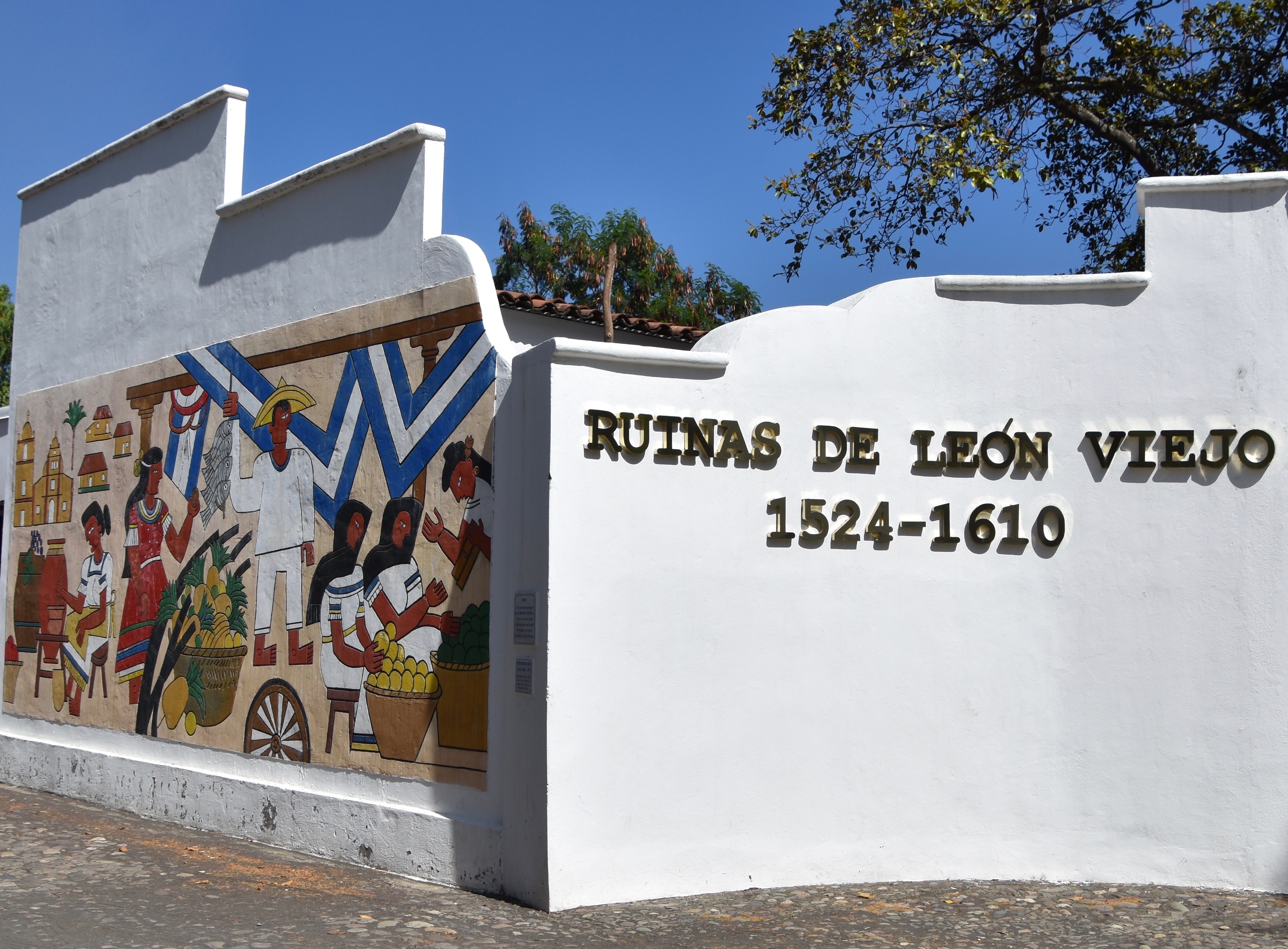
Despite this somewhat grand entry sign there are no other vehicles in the parking lot and nobody apparently in charge. There is a map of what the place looked like in 1610 with a list of 19 identified sites.
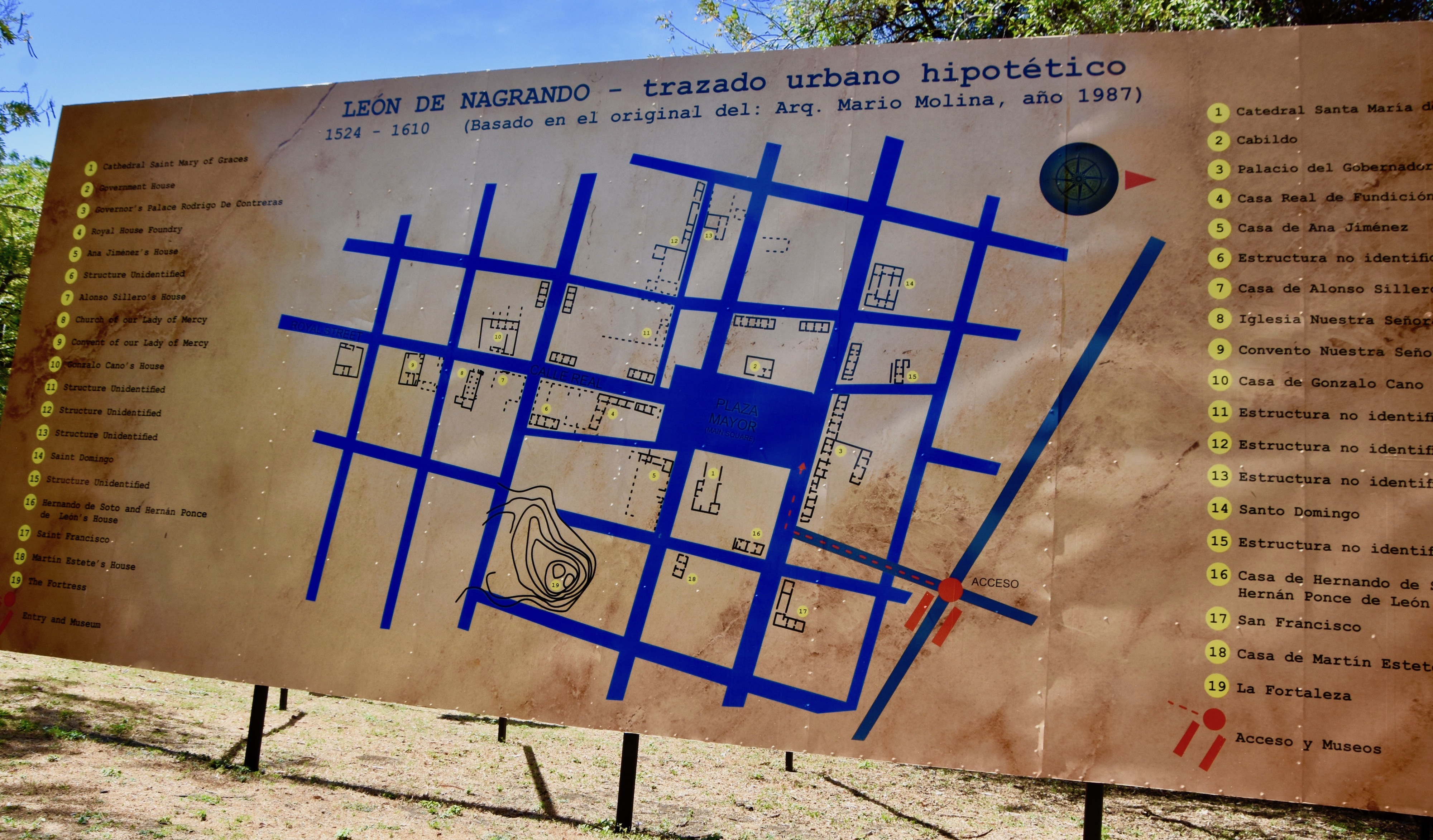
There is a very small exhibit centre with not a lot in it other than a model of the old city with the most impressive buildings the cathedral.
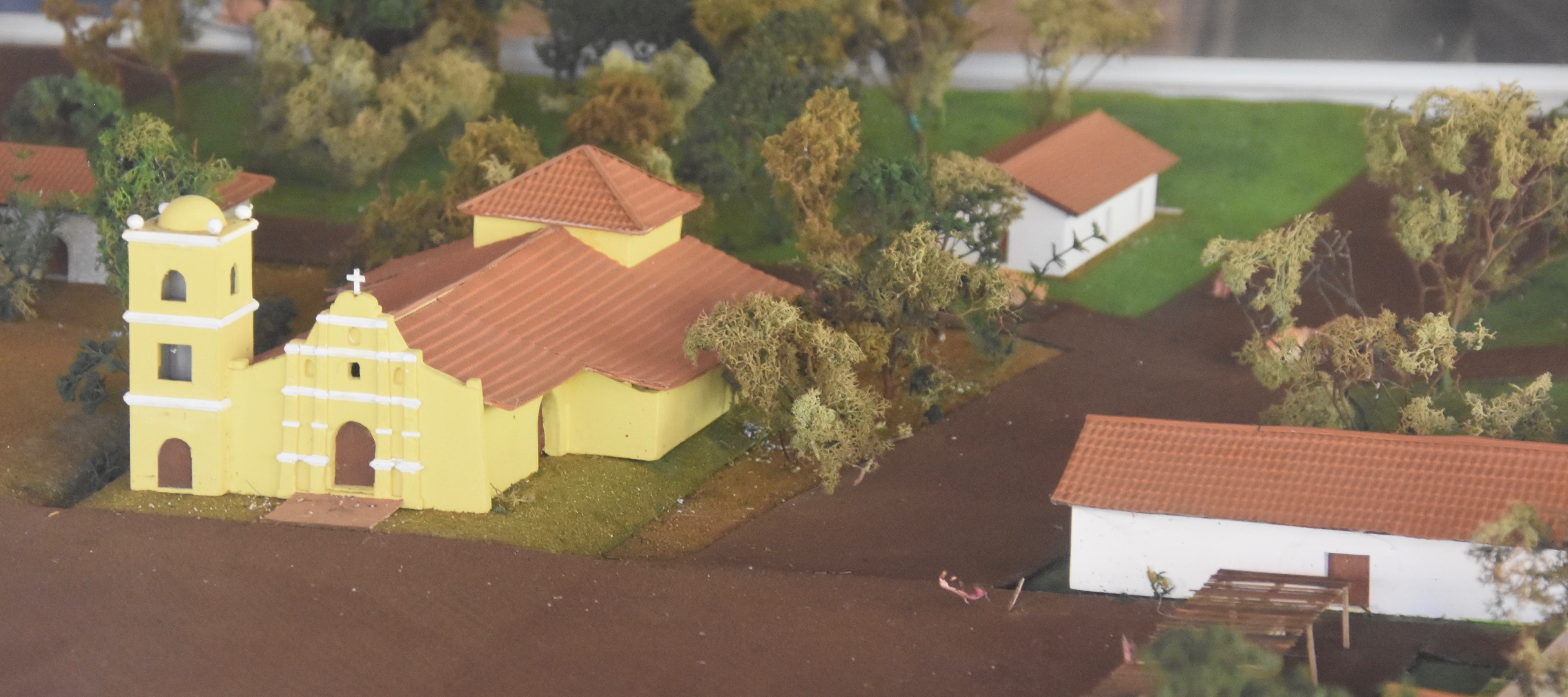
And the Citadel which looks like it might have been made from lego blocks..
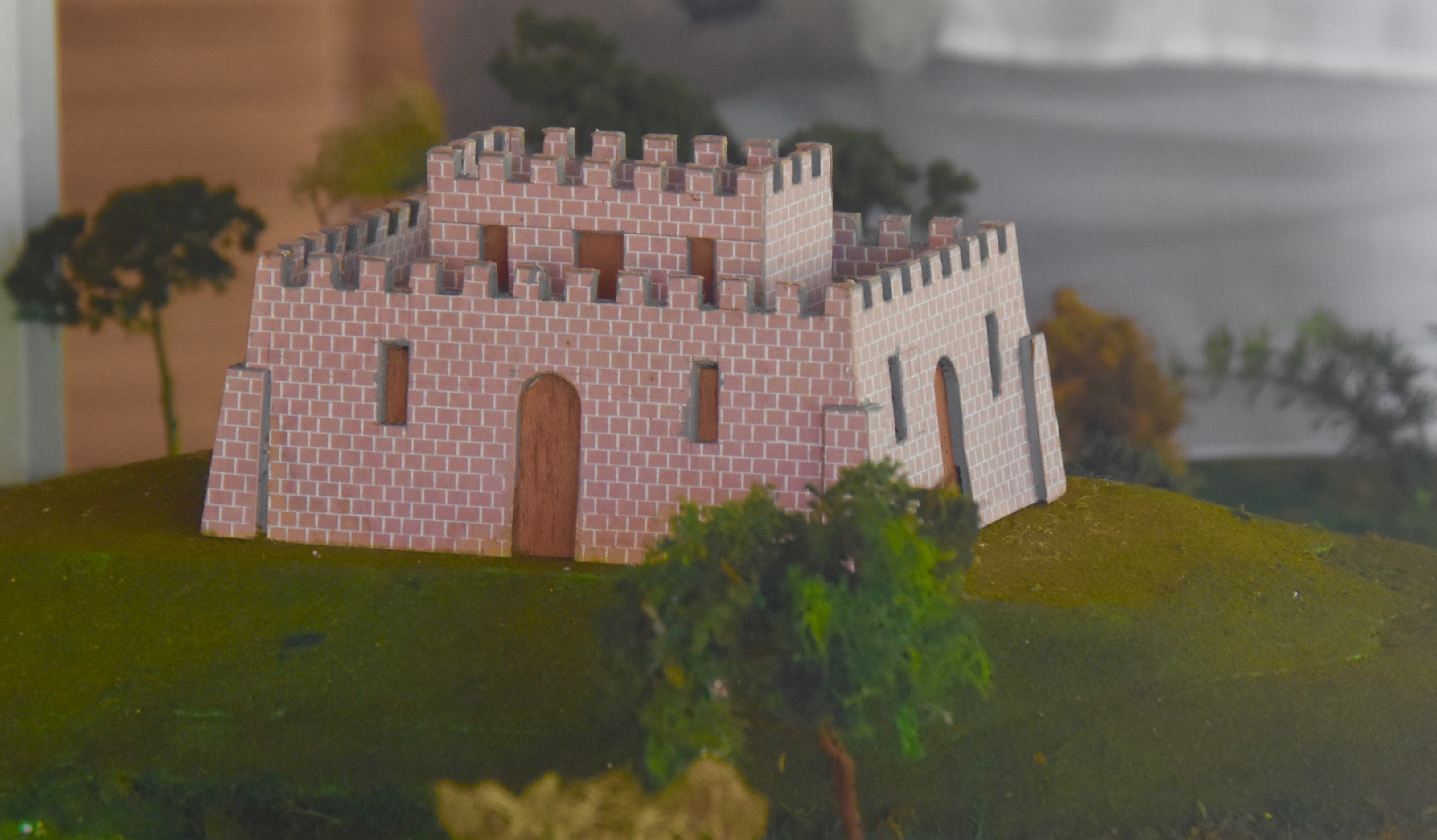
The original León was founded in 1524 by Francisco Hernandez de Cordoba, the same guy who founded Granada earlier in the same year. As noted in my post on Granada his reward was to be beheaded for treason in 1526, which event occurred right here in León Viejo. In 2000 his remains were discovered on the grounds we are walking today. There was apparently a substantial existing Indigenous population in the area which the Spaniards viewed as human fodder for slavery and/or extermination. The savagery of the onslaught is memorialized in this statue not far from the entrance which is dedicated to those who died in the insurrection of 1528, by which time the native population knew that the newcomers were only bringing death and destruction to their way of life. Perhaps most galling to them was the idea that this was all being done in the name of some omniscient god who claimed to be merciful and forgiving.

This statue shows an Indigenous cacique being attacked by one of the infamous Spanish war dogs that were trained to kill and spread terror with their ferocity. The Spanish mastiff was far larger than the dog portrayed here and could weigh up to 250 pounds. They would not have bothered with the leg, but gone straight for the throat. Man’s best friend? Not if you were their perceived enemy.
The site was utterly deserted aside from the numerous birds including mot mots and trogons that deflected our attention with their bright colours and loud calls.
The first building you come to is the Governor’s Palace which is anything but palatial looking. It takes a while to realize that we are standing a good six to eight feet above the level of the ground at the tim León Viejo was abandoned. Unlike Pompeii it was not totally covered with volcanic ash in one terrible event, but subject to major earthquakes in 1594 and 1610 which convinced the people to move some twenty miles further away from Momotombo and found the present day city of León. Subsequent eruptions did completely bury the site, proving that it was indeed a wise decision to relocate.
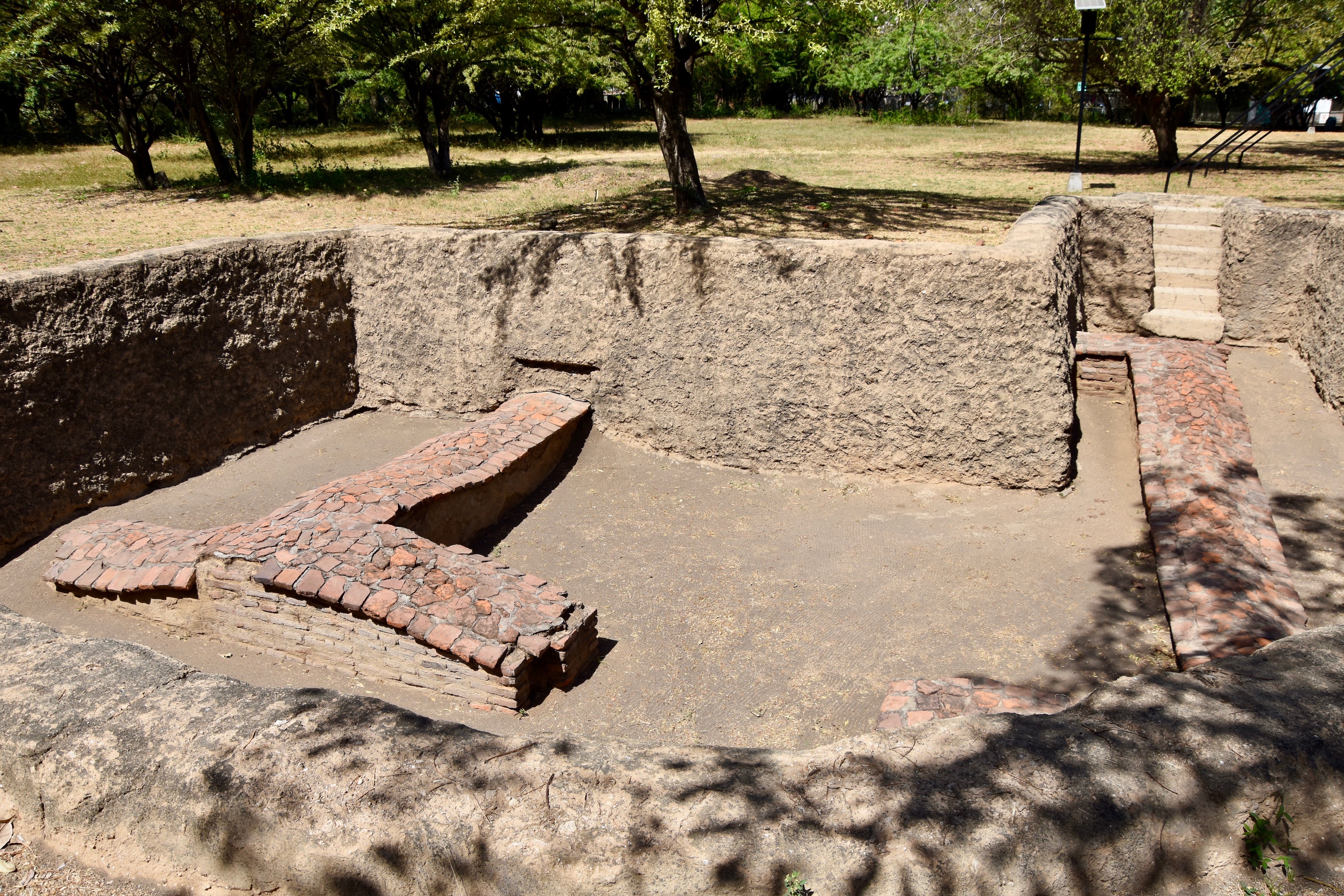
Our group ambled its way along the Calle Real to explore some of the more prominent buildings that have been excavated.
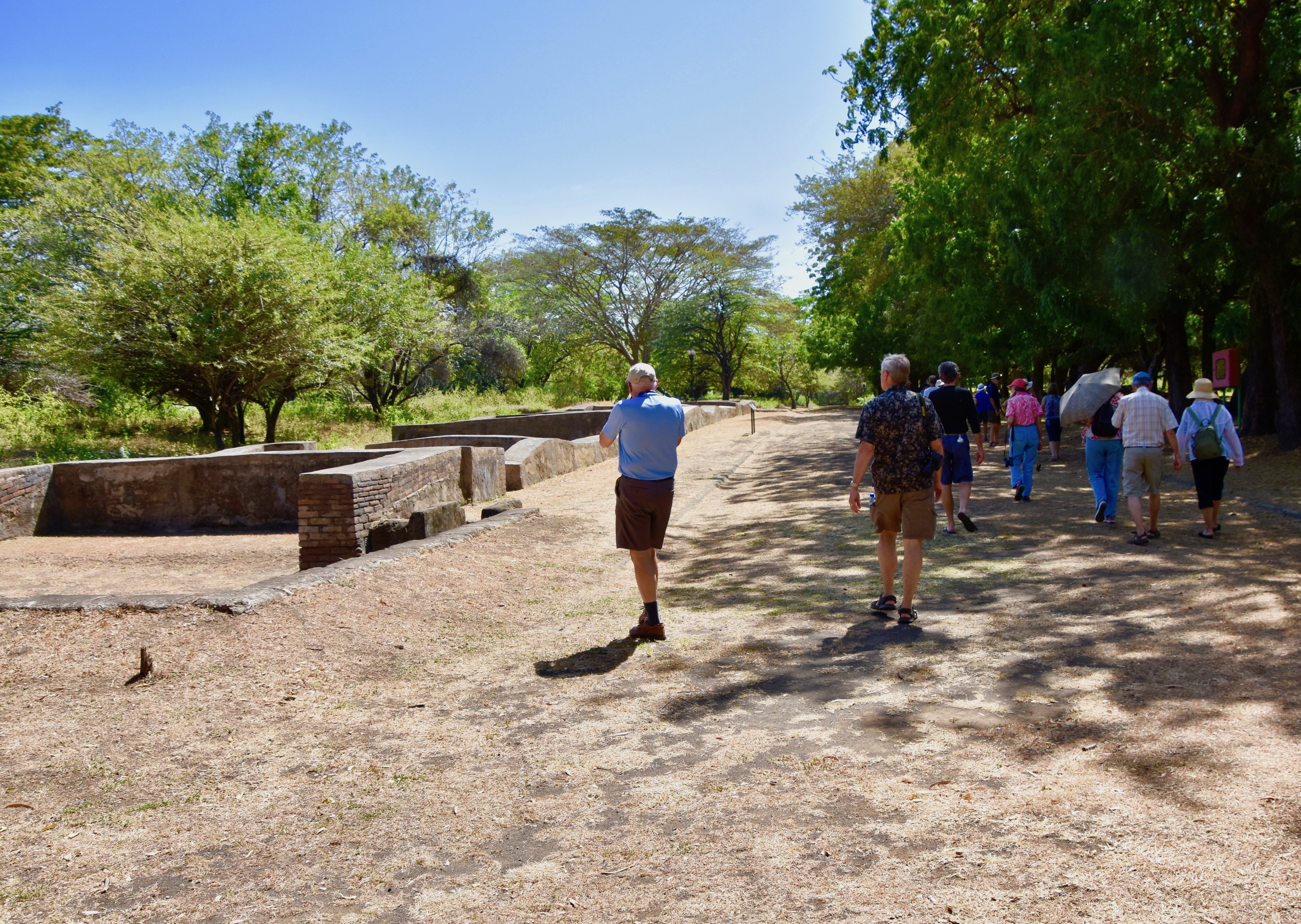
As with all early colonial settlements founded by Catholic nations, whether Spanish, Portuguese or French, religious orders tended to dominate. There were no less than three monasteries and this complex which Aura identified as a convent.
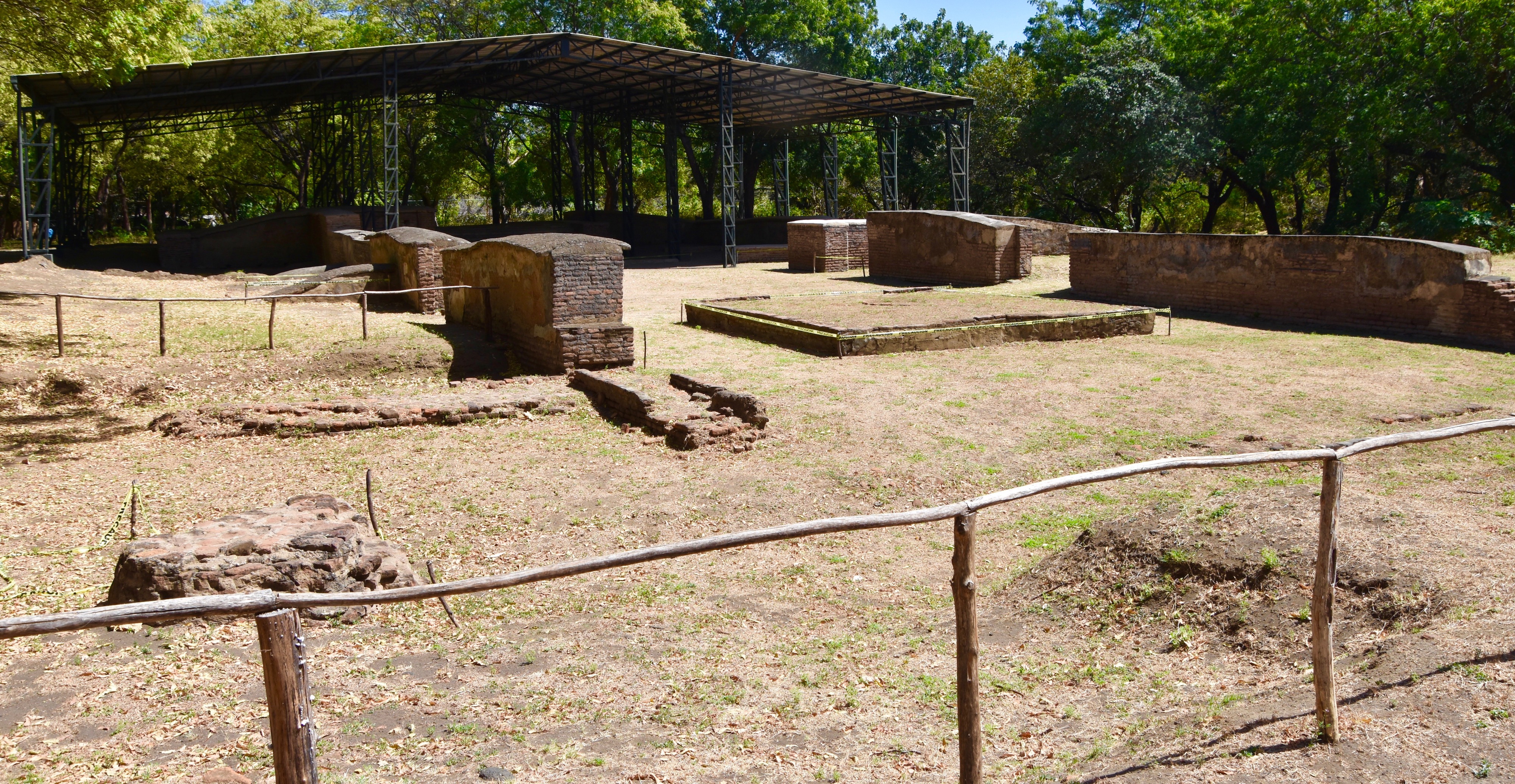
The most important building excavated so far is undoubtedly the original Our Lady of Mercy, one of the oldest churches in the New World. It was here that the remains of Cordoba were unearthed.
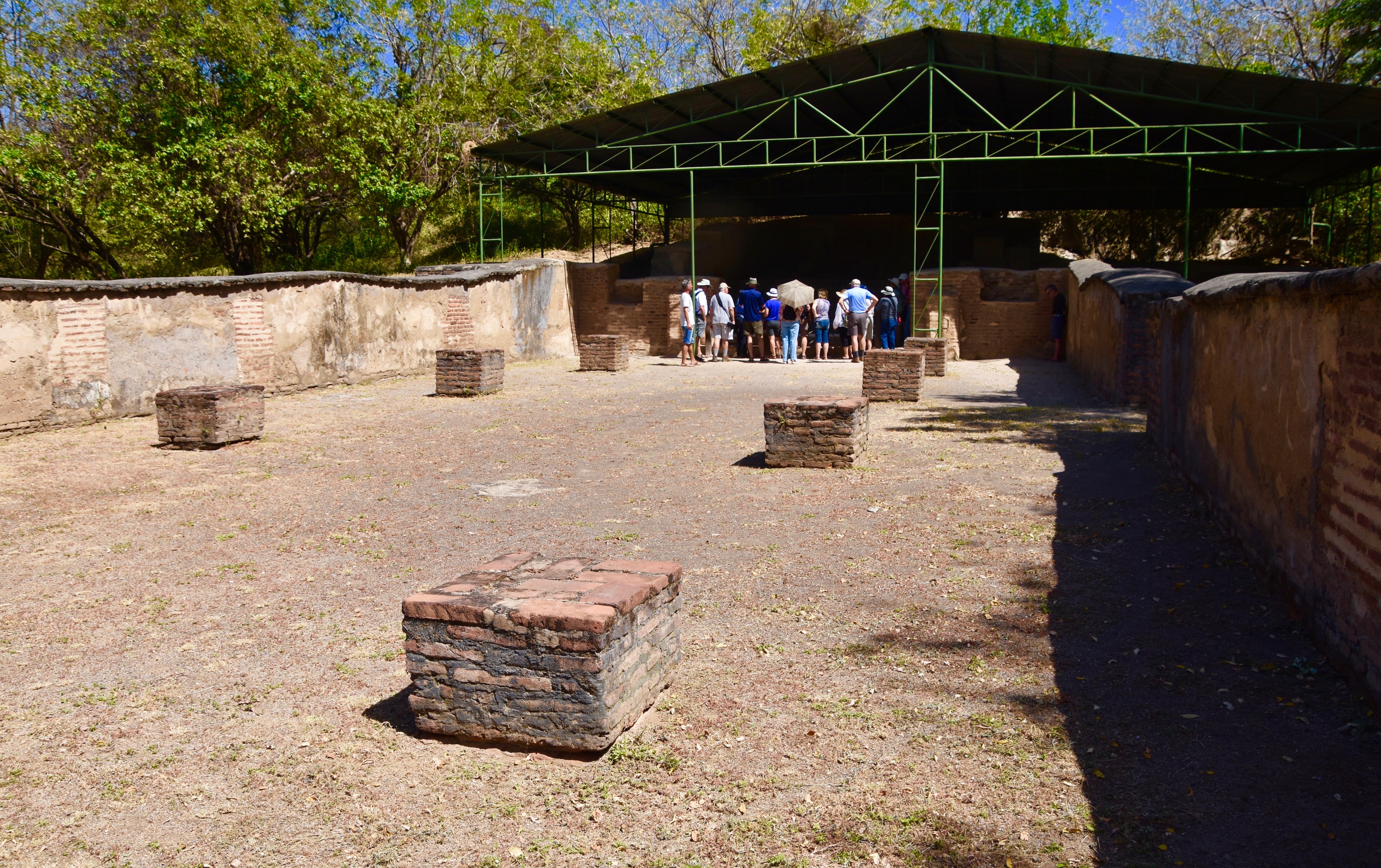
The most interesting building for me was one that has not yet been excavated, but whose existence is easy to identify by the large man made mound at the outer extremity of the site. This was the former Citadel and standing on top of it you get the best view of Momotombo and her supposed son Tombolito who rises directly from the waters of Lake Managua. She’s still smoking and who knows when León Viejo might be buried again?
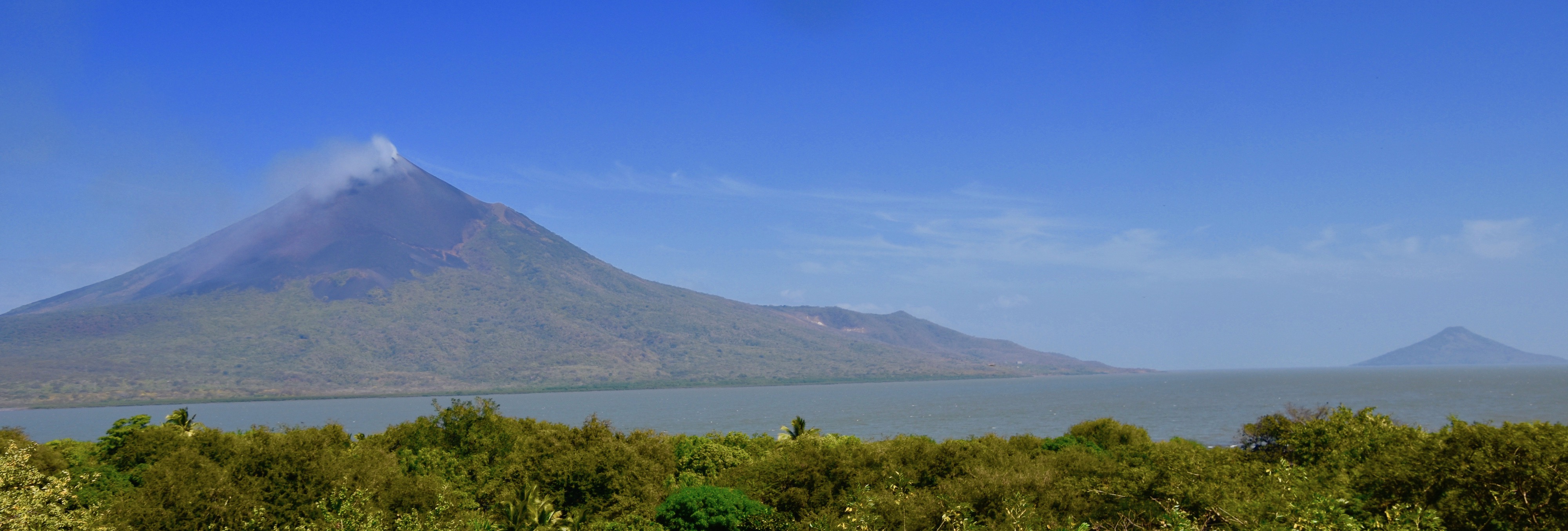
And with apologies to Malcom Lowry, for sure you are going to want that great picture under the volcano.
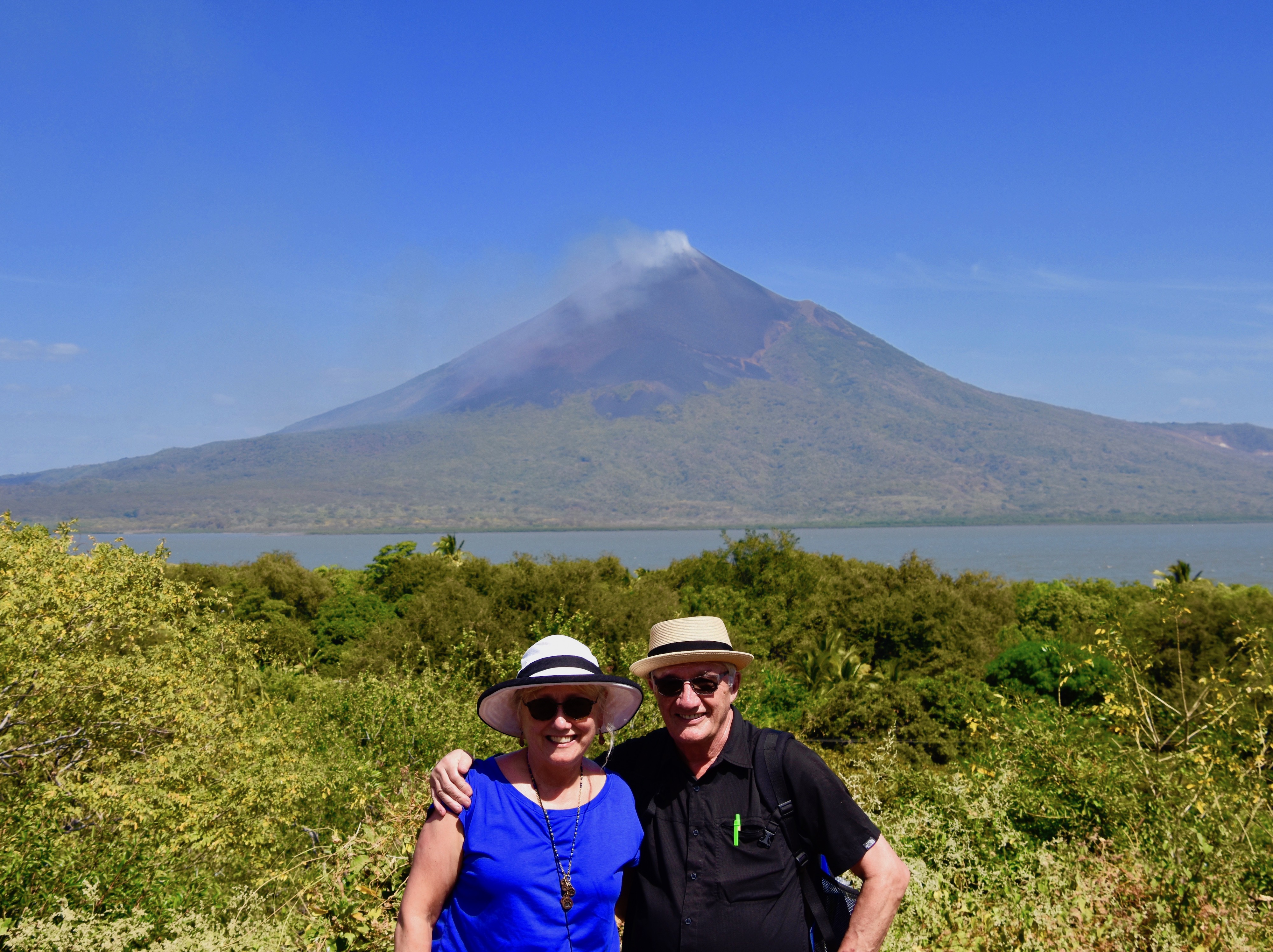
That concludes this post. Next we’ll visit Nicaragua’s most interesting and dynamic city, León the Younger. Hope you’ll join the Adventures Abroad group.